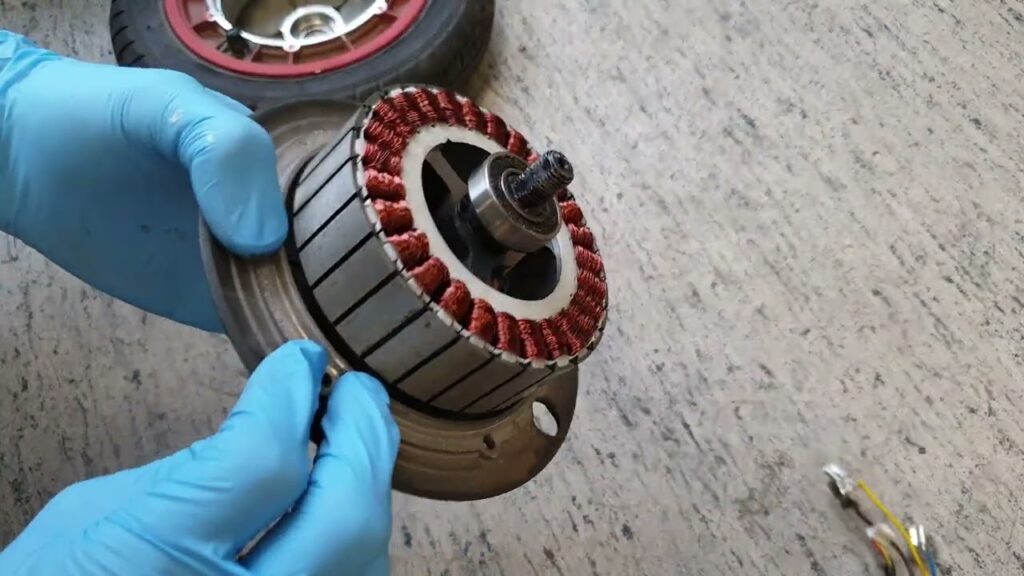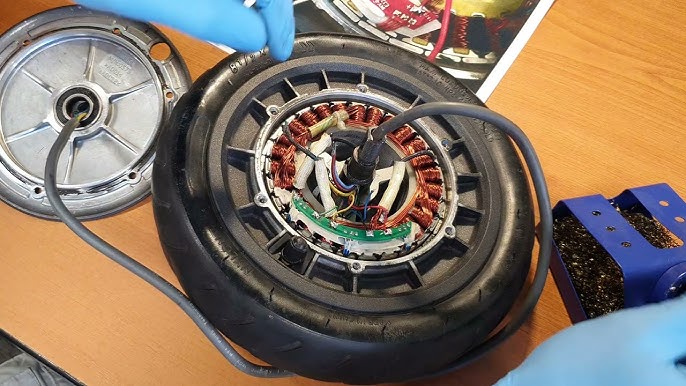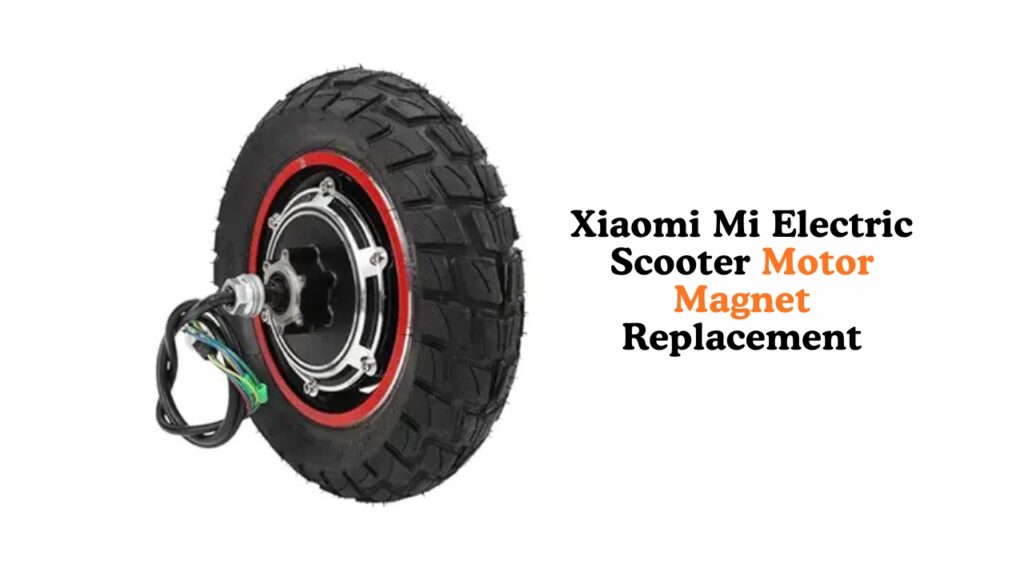Electric scooters like the Xiaomi Mi and M365 Pro are popular for their smooth ride and convenient design. However, like any machine, they can experience motor issues over time. One common problem is damaged or missing magnets in the hub motor, which can make your wheel spin with difficulty or produce grinding noises. In some cases, the entire motor assembly may need replacement. This guide will walk you through both options, including tools, tips, and safety precautions, so you can get your scooter running smoothly again.
Understanding Your Xiaomi Scooter Motor
Xiaomi electric scooters use a hub motor with neodymium magnets attached to the wheel’s rotating part. These magnets interact with the motor’s stator to generate movement. When magnets are damaged, or bearings fail, you may notice poor wheel rotation, grinding sounds, or even overheating of the motor. Identifying the exact cause is key before attempting a repair. Sometimes a broken bearing can cause the stator to rub against the magnets, leading to further damage, so careful inspection is essential.

Option 1 – Replacing Motor Magnets
Replacing the magnets alone can be a cost-effective solution if the motor is otherwise intact.
Step 1: Identify and Source Replacement Magnets
Purchase replacement neodymium magnets specifically designed for electric scooter motors. For Xiaomi models, rectangular 30mm magnets are commonly used. Make sure to buy high-quality magnets to ensure reliable performance.
Step 2: Heat the Motor Housing
Use a heat gun or hair dryer to gently heat the inside of the motor wheel. This softens the adhesive holding the old magnets in place. Avoid overheating, which could damage the motor or wiring.
Step 3: Pry Out the Old Magnets
Once the adhesive softens, carefully remove the old magnets with a prying tool. Wear gloves and eye protection to prevent injury, as magnets can snap and cause accidents.
Step 4: Clean the Motor Wheel
Remove any leftover adhesive from the motor wheel to ensure the new magnets sit flush and securely. A clean surface improves magnet adhesion and motor performance.
Step 5: Install New Magnets
Place the new magnets in their correct positions. Accuracy is crucial—misaligned magnets can cause vibrations, grinding, or poor performance. Apply a small amount of high-strength adhesive if necessary and allow it to cure completely before using the scooter.
Tips and Cautions
When replacing magnets, never force them into place, as this can cause damage. Make sure the bearings are in good condition before starting the replacement. If you lack experience, it’s best to seek professional help, since improper installation can harm the motor and affect performance.

Option 2 – Replacing the Full Motor Assembly
If your motor is severely damaged or magnet replacement seems too complex, a full motor swap may be the best solution.
Step 1: Identify a Compatible Motor
Check your scooter model and wattage requirements. For instance, the Xiaomi M365 Pro uses a 350W hub motor. Some replacement motors come as complete wheel assemblies, which simplifies installation.
Step 2: Purchase the Replacement Motor
Order the motor from a reliable supplier. Ensure it includes all necessary components, such as the tire and wheel, if the old motor’s wheel is damaged.
Step 3: Install the New Motor
Remove the old motor assembly by unscrewing the wheel and detaching any wiring connectors. Install the new motor assembly carefully, ensuring alignment and secure connections.
Step 4: Check Compatibility and Tune
If you use an aftermarket controller, perform an auto-tune procedure to configure the motor’s magnetic poles and parameters. This ensures smooth operation and avoids unnecessary wear.
Common Mistakes to Avoid
Common mistakes to avoid during motor or magnet replacement include ignoring hidden damage such as broken bearings or wiring issues, misplacing or misaligning magnets during installation, using incompatible replacement motors or parts, and skipping safety precautions when heating the motor or handling magnets. Being cautious in these areas ensures a successful repair and prevents further damage.
Tools and Materials You’ll Need
To perform motor or magnet replacement, you’ll need a few essential tools and safety equipment. A heat gun or hair dryer helps soften adhesive holding old magnets. Prying tools, screwdrivers, and wrenches are needed to remove and install components. You’ll also need replacement neodymium magnets or a full motor assembly, along with cleaning materials to remove adhesive residue. Always wear gloves and safety glasses to protect yourself during the process.
Tips for Maintenance and Longevity
Regular maintenance is key to keeping your scooter running smoothly. Inspect your motor and wheel bearings frequently to catch any issues early. Keep the motor clean and dry, especially after riding in rain, to prevent damage. Avoid overloading the scooter or riding aggressively, as this can strain components. If you’re unsure about any repair, seek professional assistance to ensure safety and proper function.
FAQs
Can I replace magnets without technical experience?
It’s possible but not recommended. Magnets must be aligned precisely, and improper handling can damage the motor.
How do I know if the motor itself is damaged?
If the wheel spins with difficulty even after replacing bearings or magnets, or if the motor produces unusual sounds, it may be time for a full motor replacement.
Are replacement motors expensive compared to magnets?
Yes, full motor assemblies are generally more expensive, but they are more reliable if your motor is heavily damaged.
How long will the repair last if done properly?
With proper installation and maintenance, both magnet replacement and motor swaps can last several years, depending on usage and riding conditions.
Conclusion
Motor issues are a common challenge for Xiaomi electric scooter owners, but with the right tools, guidance, and precautions, you can address them effectively. Whether you choose to replace only the magnets or swap the full motor assembly, careful inspection and correct installation are key to restoring smooth performance. Regular maintenance, proper riding habits, and timely repairs ensure your scooter remains safe, reliable, and fun to ride.

